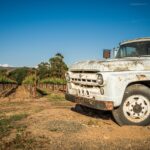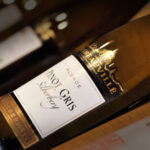
If you were a wine-savvy Roman citizen in the first century, chances are you’d be telling your friends about the delicious wines of Mallorca, Spain. The Roman wine-loving historian and philosopher Pliny the Elder praised Mallorcan wine so highly, vast quantities were exported into Rome from this western Mediterranean island.
Sunny Mallorca, with its dramatic coastline, is one of four Balearic Islands off the coast of Barcelona. Each island has a personality of its own, with Mallorca best known for its natural beauty, sophisticated gastronomy, upscale resort hotels, and delicious wine. Though production is now too limited for the export market, wine tourism is booming. Wine-loving visitors will find several “wine experiences” available to suit their taste and budget. These range from luxury wine tasting visits via helicopter or boat, visits to wineries via a “wine express” train, dinners with winery owners, or simply driving oneself to a winery for a pre-arranged visit and tasting. Because of busy tourist seasons and harvest, it is essential to pre-book appointments via email.

The La Residencia Hotel
1990 marks the date when the high-altitude Mallorcan region of Binissalem was awarded its Spanish D.O. (Denominación de Origen). Here, the unique microclimate is created by the Alfabia and Tramuntana mountain ranges. Binissalem is considered the capital of the Mallorcan wine industry, yet a second D.O. in a lower altitude was established in 1999 called Pla I Llevant. Its vineyards are located in the areas known as Felanitx and Manacor, which cover the central and eastern part of the island. Curiously, both of these regions have 13 wineries each.
Both Binissalem and Pla I Llevant grow international varieties (Cabernet Sauvignon, Merlot, Syrah, etc) as well as the widely planted native red variety Manto Negro, which has a perfumed aroma and is light in color. To give Manto Negro more structure and age-worthiness, it is often blended with red varietals such as Cabernet Sauvignon or Syrah and aged for several months in oak. Both D.O. regions produce white wines as well, from international varieties such as Chardonnay and Sauvignon Blanc, plus native white varieties like the commonly planted Moll (also called Prensal Blanc).
Exploring the Island
Wine tourism is only one of the many reasons to visit beautiful Mallorca. The island has something for everyone, ranging from family vacations with an emphasis on water sports, to a pampered romantic couples’ getaway at the most luxurious hotels in the world. Adventurers will find exotic cave tours, while foodies will find more gastronomic restaurants than they can visit in a fortnight. It’s easy to find hotels that can suit any budget, including self-catering apartments with kitchens that are great for families.
That said, Mallorca is a big island so it’s important to think about the kind of activities and hotels you prefer. It’s also important to think about how much you want to drive, or whether you want to drive at all. Palma de Mallorca, the capital city, is an excellent base for non-drivers. From Palma, it is easy to take a public train directly to the Binissalem wine region and meet up with your tour or arrange for them to pick you up. In Palma, you can also walk to some gorgeous beaches. Palma offers endless choices of restaurants and hotels, with everything within walking distance. In the evening, enjoy the magical stroll along the Palma’s Paseo Maritimo, the 2.5 mile promenade that runs parallel to Palma’s seafront. En route, the view is all palm trees and yachts on one side, with restaurants and outdoor cafes on the other. It is one of the best places in the world to sip Sangria and people-watch.
Outside of Palma, non-drivers can find small villages with a range of hotels in various price brackets, many of which are located within walking distance to beaches and restaurants. One of my favorites is the charming village called Deia. For nearly a century, it has earned the reputation as an artist’s colony, one popular with poets and novelists as well. The famous poet and novelist Robert Graves lived most of his life here and used the village as the basis for many of his books. His home is now a museum, and the nearby cemetery in which he is buried is very quaint and open to visitors.

Walking with donkeys at La Residencia Hotel
In Deia, the most upscale hotel is the magnificent La Residencia. The foundation of what is now the hotel was built by an order of Cistercian monks in the 18th century. When I first began to visit Mallorca, the then-boutique hotel had been owned by Virgin Airlines founder Richard Branson. Today it has been bought and revamped yet again by the luxury Belmond hotel group, who have turned it into a world-class five-star hotel with a gorgeous pool, spa, tennis, and a menu of exciting guest activities like boat rides and walks with donkeys in the hills.
Deia is home to the one-Michelin star restaurant, Es Raco d’es Teix, and my favorite fine dining restaurant, the romantic, candle-lit El Olivio. The village offers casual restaurants too, with a winner being Sa Vinya, with surprisingly good food and a charming atmosphere at the foot of the mountain. Beaches are a long walk, or short taxi or bike ride away. With the famous lively Sa Fonda bar open almost evening offering drinks, music, and the opportunity to meet other travelers, you’ll rarely have to leave this village.
Since my first visit to Mallorca well more than a decade ago, I’ve seen the local wine industry change dramatically. Wineries have well-trained hosts on hand to help educate guests about Mallorcan wine and its history. An increasing number of wineries also include a trip to the vineyard and an explanation of the terroir. Given the small quantities and high quality of wine produced here, it might be a while until you can find Mallorcan wine in your favorite shop. All the more reason to visit this wine region now…and decide for yourself whether Pliny The Elder was right to sing its praises.
If You Go
Wine Tour Companies
These companies have relationships with most of the commercial Mallorcan wineries, When you visit the main home pages of the two tour companies listed below, you will find the variety of wine tours available.
Mallorca Wine Tours: This company offers a wide variety of wine tours, including helicopter and bike wine tours.
Wine Routes Mallorca: An assortment of wine experiences at a variety of price points, and one that includes a boat ride in addition to wine tastings.
Interesting Wineries to Visit
Email for prices and availability, since a few of these places offer private tastings by appointment only.
Now 300 years of age, this is one of the oldest wineries on the island, still family owned and now run by the tenth generation. The winery is notable for their research projects to improve the natural varieties. The 100 acres of vineyards have the widest range of native grape varieties of any on the island, with some rare varieties that were previously on the verge of extinction. The 18th-century family manor house on the site still has its original barrel cellar and wine-making warehouse.
In 1985 Miquel Gelabert founded the winery, established to research and improve the growing of the vineyards in order to produce the best quality wine. The tastings are by appointment only, and they are held in the small winery cellar in the city center of Manacor. Email info@vinsmiquelgelabert.com for current tasting offerings.
The large and successful MaciàBatle winery has been producing wine since 1856, these days making modern, award-winning wines using traditional, local vines. Tours of the winery take place at regular intervals throughout the day and include tasting four wines and some light snacks.
Created in 2006, this is a company dedicated to producing wines that reflect the strength of the grape. Visits by appointment only (email monica@4kilos.com). Please take note that here, wine is tasted directly from the barrel. It is not a conventional formal tasting at a table with glasses poured from a finished bottle. Food is not served, but this is a great no-frills venue to discover the relationship between grape, soil, climate and terroir.

Marisa D’Vari DipWSET is a Manhattan-based wine journalist, educator, and consultant with more than a dozen wine credentials (Certified Sommelier, CWE, etc). Follow her wine-region adventures on Instagram @awinestory.




